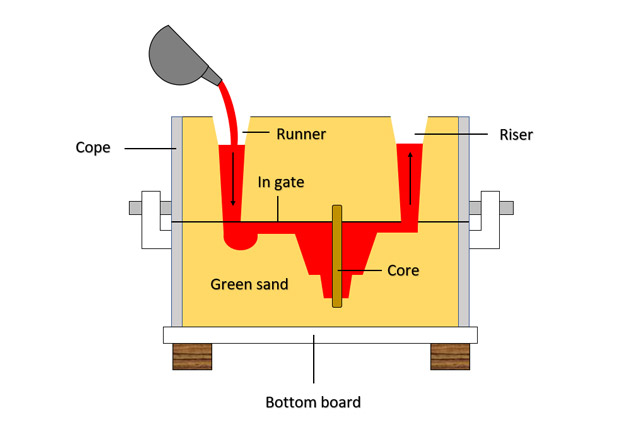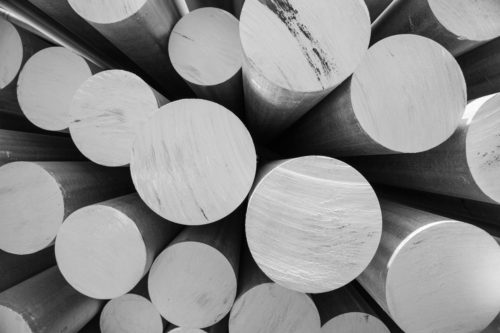An Unbiased View of Stahl Specialty Company
An Unbiased View of Stahl Specialty Company
Blog Article
An Unbiased View of Stahl Specialty Company
Table of ContentsWhat Does Stahl Specialty Company Do?Stahl Specialty Company Things To Know Before You Get ThisIndicators on Stahl Specialty Company You Should Know9 Simple Techniques For Stahl Specialty CompanyThe Only Guide to Stahl Specialty CompanyRumored Buzz on Stahl Specialty Company

If you're developing a steel product, you've likely considered utilizing light weight aluminum as the base material. Pure light weight aluminum has actually restricted applications, so it is frequently incorporated with various other elements, such as silicon, magnesium, and manganese to create alloys.
Different elements and amounts create a variety of desirable physical and chemical properties. And the Light weight aluminum Association (AA), based in North America, has developed requirements that manage light weight aluminum alloys' composition, residential or commercial properties, and nomenclature. There are 2 kinds of aluminum alloys wrought and cast. Shop workers form these alloy kinds in different ways, which substantially influences their attributes.
The Only Guide to Stahl Specialty Company
Cast light weight aluminum alloys are made by thawing pure aluminum and combining it with various other metals while in fluid kind. The mix is poured into a sand, die, or investment mold. After solidification, the steel is gotten rid of from its mold. At this stage, it remains in either its final type or as a billet or ingot for further handling.

For instance, 160.0 stands for a cast with a minimum of 99.60% aluminum. The 4th number, which comes after the decimal factor, specifies if the alloy is a spreading (xxx. 0) or an ingot (xxx. 1). Wrought aluminum alloys likewise begin by integrating molten light weight aluminum with other steels. Unlike cast alloys, nonetheless, they are created into their final form with procedures such as extrusion, rolling, and flexing after the steel has strengthened right into billets or ingots.
There are several small distinctions between wrought and cast light weight aluminum alloys, such as that cast alloys can consist of a lot more considerable quantities of other metals than functioned alloys. The most remarkable difference between these alloys is the fabrication process via which they will certainly go to provide the final item. Apart from some surface area therapies, cast alloys will leave their mold and mildew in virtually the specific solid type preferred, whereas wrought alloys will certainly undertake several alterations while in their solid state.
If you believe that a wrought alloy might be the most effective for your job, have a look at several of our write-ups that discuss more regarding particular wrought alloys, such as Alloy 6061 and Alloy 6063. On the other hand, if you believe a cast alloy would certainly be much better for you, you can find out more regarding some actors alloys in our Alloy 380 and Alloy 383 short articles (coming soon).
Not known Facts About Stahl Specialty Company
When picking a light weight aluminum factory for your production demands, it's vital to study several factors. Among one of the most crucial facets to consider is the experience and skills of the factory. Casting Foundry. Picking a factory that has the best expertise of the light weight aluminum casting procedure, and the profile to reveal for it, aids to have a successful result for your task
Having the experience and sector knowledge to engineer your spreadings for optimal production and top quality outcomes will streamline the task. Making aluminum castings calls for a complex set of processes to achieve the best results. When choosing a brand-new light weight aluminum foundry to partner with, ensure they have considerable sector experience and are well-informed about all aspects of the light weight aluminum spreading procedure: design, production, material evaluation, and item testing.
The foundry ought to likewise have a tested track record of providing exceptional products that meet or surpass client assumptions. Quality assurance must likewise go to the top of your list when choosing a light weight aluminum factory. By functioning with a qualified shop that complies with the criteria for quality assurance, you can protect the stability of your item and ensure it meets your requirements.
By choosing a firm who supplies solutions that meet or surpass your item requirements, you can be certain that your project will be finished with the utmost precision and performance. Different parts call for different production methods to cast light weight aluminum, such as sand spreading or pass away casting.
Little Known Facts About Stahl Specialty Company.
Die casting is the name provided to the procedure of producing complicated metal elements with use of molds of the element, additionally understood as passes away. It creates more parts than any type of other process, with a high degree of accuracy and repeatability. There are three sub-processes that drop under the group of die spreading: gravity die spreading (or irreversible mold and mildew casting), low-pressure die casting and high-pressure die spreading.
After the purity of the alloy is checked, dies are created. To prepare the dies for spreading, it is important that the passes away are clean, so that no deposit from previous productions stay.
Stahl Specialty Company Things To Know Before You Get This
The pure steel, also called ingot, is included in the heating system and maintained the molten temperature level of the steel, which is after that transferred to the injection chamber and injected into the die. The stress is then maintained as the metal solidifies. When the metal strengthens, the cooling process begins.
(https://writeablog.net/stahlspecialc/stahl-specialty-company-is-one-of-the-largest-permanent-mold-foundries-in-the-us)
The thicker the wall surface of the component, the longer the cooling time due to the amount of indoor steel that also needs to cool. After the part is completely cooled, the die cuts in half open and an ejection device pushes the part out. Following the ejection, the die is shut for the following injection cycle.
The flash is the extra product that is cast throughout the procedure. This have to be trimmed off using a trim device to leave just the major component. Deburring removes the smaller sized pieces, called burrs, after the cutting process. Lastly, the component is polished, or burnished, to offer it a smooth finish.
Stahl Specialty Company Fundamentals Explained

Zinc is one of the most previously owned alloys for die casting due to its lower cost of raw products. Its corrosion resistance likewise permits the components to be lengthy long-term, and it is one of the a lot more castable alloys due to its reduced melting point.
As pointed out, this alloy is just one of the most frequently utilized, yet manufactures will, at times, pick aluminum over zinc as a result of aluminum's manufacturing benefits. Aluminum is very economical and among the extra versatile alloys. Aluminum is used for a number of various products and industries anything from home window frameworks to aerospace products.
Report this page